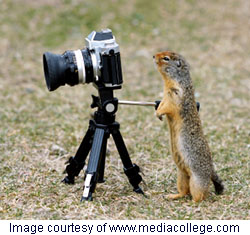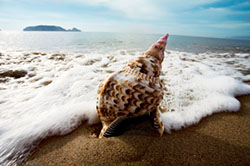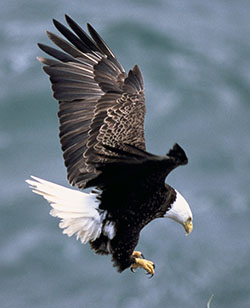Nature Photography



Capturing the Natural World in all its Glory
While most of us are pretty adept at pointing our camera at a wonderful landscape scene and shooting the image, few of us manage to capture its true beauty. Similarly, we may seize the opportunity to photograph a bird preparing for flight, and yet our photograph is unable to convey the elegance of its movements. But by giving a little thought to what you’re photographing, and a little consideration to your subjects, you can turn your nature and wildlife photographs into dramatic and stunning images.
Nature
Whatever scene you’re shooting, always look carefully at what you’re framing before you decide you’ve got the perfect shot. Position the camera at various angles to see if you can get a more interesting perspective on a scene. For example, while you may think that a long stretch of sand with the sun sinking on the horizon in the distance would make a great nature photo, by focusing on the texture of the beach and filling the frame with this detail, you can produce a much more interesting image.
Don’t always think big when photographing nature; there’s just as much beauty in the smaller aspects of it. For instance, while a bunch of flowers may make for a great colorful photograph, focusing in on one single flower or a tiny detail can produce a stunning image. Be prepared to get down on your knees, or even flat on your stomach, in order to get the best shots. When seen from an unusual perspective, something as simple and everyday as a section of a field can look dramatic: offer the viewer a perspective on an image of nature that they would rarely see.
If you have the opportunity to photograph nature scenes at different times of the day, always consider whether you could improve on your image if you photographed it at a different hour. The overall tone of your photograph could be changed significantly just by shooting at a later time in the day, for instance. Think about what you want to convey through your photograph and then arrange your shoot accordingly.
Wildlife
When photographing wildlife, always be considerate of your subject. Don’t frighten your subject in order just to get a good shot. Wildlife photographers who have a genuine respect for what they’re photographing usually produce the best shots as they understand the nature of their subjects and are able to anticipate their behavior.
You will get a much better photograph if you allow the animal you’re photographing to approach you; by doing this the animal perceives that it is in control. You will then be able to take photographs at a considerably closer distance, producing higher quality images. You will also be able to frame the subject so you won’t have to significantly crop the image.
Wearing camouflage minimizes the impact of your presence on the behavior of animals by reducing your visibility or distorting your outline. Wearing dull colored clothes can have the same effect. In addition, wearing gloves can also help when photographing wildlife, as moving your hands can cause animals to instantly react.
When photographing birds, remember that they don’t like to fly at low-level when the wind is behind them and will naturally land and take-off into the wind. Use this knowledge of behavior to improve your chances of getting the shot you want. And when photographing unfamiliar animals, research their habits and behavior to help you capture images that show them off at their best.
If you want to photograph flying insects then take advantage of the fact that they don’t fly until they have warmed up. Get up early and get extremely close to your subjects while they are too cold to fly. Crawling along the ground can get you into a good position, close to your subject. Move very slowly as you approach and you should get some great images.
When photographing wildlife, the eye of the subject is the critical area on which to focus. However, a camera’s lens on auto focus will typically focus on the chest or side of the animal. If possible, use manual focus, or auto focus on the eye and then focus lock so you can re-compose the image.
Avoid shooting wildlife images at midday when the sun is directly overhead as shadows will spoil your photographs. The lighting is better in the early morning or late afternoon when the sun is lower on the horizon and will help increase your chances of taking your best wildlife images.